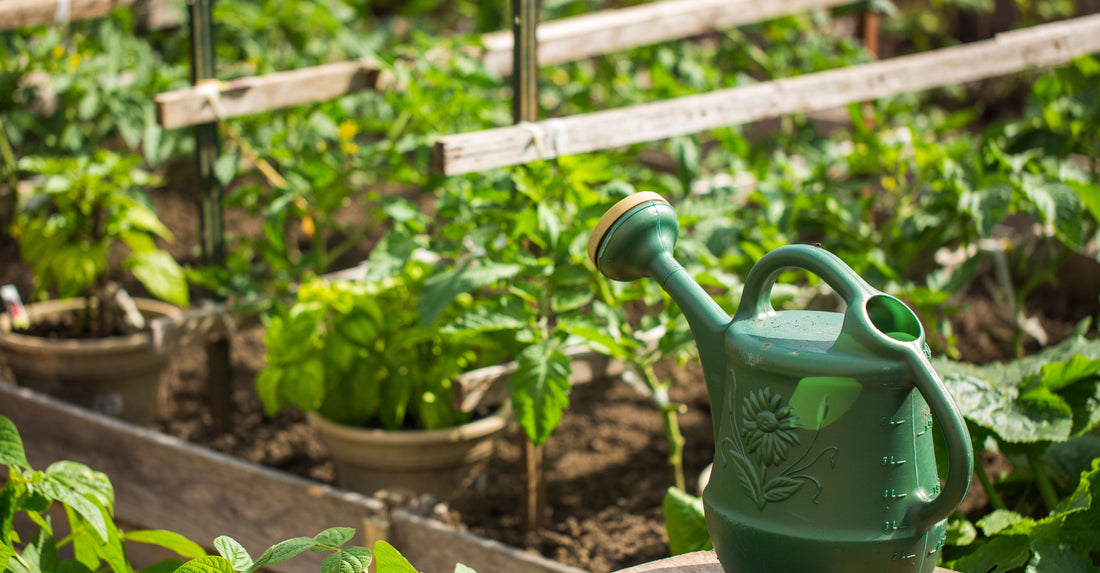
Gulay sa Bakuran: A Simple Step Toward Better Nutrition
Across many Filipino households, gulayan sa bakuran is a practical and cost-efficient way to grow food at home. Planting vegetables in small spaces reflects how families make the most of what they have. More than that, it also shows how communities continue to find ways to nourish themselves, even when the resources are limited.
Common practices include recycling plastic buckets to become a home for pechay plants. An old rice sack holds healthy kamote tops, and along their backyard fences, you will see sitaw climbs with purpose. These gardens grow in backyards, along footpaths, and even in tight alleys. They may not look like farms, but they feed households just the same.
When vegetables grow close to the kitchen, meals become more frequent, nutritious, and affordable. Parents no longer need to skip fresh produce because of rising prices. Also, the children are more likely to choose healthier foods, because they know where their meals come from, and how they’re grown. Together, families build lasting habits around food that nourishes and sustains.
Why Backyard Gardening Matters
Backyard gardens meet everyday needs. They reduce reliance on store-bought produce and allow families to decide what grows on their plates. This change also leads to a stronger household food security, but more than that, these gardens also support the body’s need for essential vitamins and minerals like iron, fiber, and vitamins that are often missing in instant meals or canned goods.
These gardens can also restore local food knowledge. Usually, the parents teach younger family members how to plant according to the seasons. Neighbors can exchange cuttings or seeds. And through this, communities reconnect with the wisdom of growing and preparing their own food—not as a trend, but as a way of life.
Five Steps to Start Gulay sa Bakuran
1. Plant what you already cook
Begin with the vegetables that are already familiar at home. Choose to plant tomatoes, pechay, kangkong, alugbati, and kamote tops because these grow well in most areas and do not need complicated care. They also appear regularly in local dishes, making it easy to include them in daily meals.
2. Use what is available
Gardening does not require large land or expensive tools. Old plastic containers, cooking pots, and basins can hold soil. A sunny space by the window or wall can support growth. Families create growing spaces using creativity, not cost.
3. Include a mix of vegetables
Combining leafy greens, root crops, and herbs creates a balanced harvest. This also prevents pests and enriches the soil. For example, grow squash for vitamin A, talbos ng kamote for energy, and malunggay for iron.
4. Grow with the household
Gardens grow better when everyone takes part. Children can water plants, while grandparents often remember planting calendars. Meanwhile, parents can guide the process and share what works. These shared tasks turn the garden into a place of learning, not just for food.
5. Connect with others
Gardening becomes more meaningful when it is shared. Seed exchanges, compost sharing, or even showing a neighbor how to transplant a seedling creates bonds. These small actions build trust and spread knowledge across the barangay.
Supporting Nutrition, One Garden at a Time
Gulay sa bakuran connects directly to community nutrition efforts. In many barangays, feeding programs benefit from fresh, local vegetables. When families contribute harvests or grow the same vegetables promoted in nutrition programs, the results reach more tables.
Barangay health workers and nutrition officers often promote backyard gardening as part of household visits. Mothers receive planting tips alongside meal preparation guides. School gardens reinforce these lessons by letting children grow and eat what they plant.
Programs like Gulayan sa Paaralan and Pantawid Pamilyang Pilipino include gardening in their approach for a reason. These efforts show that long-term nutrition does not rely only on supply—it grows stronger when families grow part of their meals at home.
A Simple Step, A Stronger Future
The practice of growing gulay sa bakuran continues because it works. It meets hunger with action. It meets rising prices with resourcefulness. It meets community challenges with shared effort.
Nutrition does not always come from large systems or outside aid. In many Filipino homes, it begins with soil, water, sunlight, and the will to grow something nourishing.
Planting vegetables at home may feel like a small step. But in every leaf, every root, and every shared harvest, it becomes a collective stride toward a stronger, healthier future.
